Are you a new car owner? Keeping your car in good condition is crucial to ensure its longevity and performance on the road. Regular car maintenance can also help you avoid costly repairs down the line. As a beginner, it can be overwhelming to know where to start. That’s why we’ve compiled a list of the best car maintenance tips for beginners. In this article, you’ll learn about essential maintenance tasks like oil changes, tire checks, and battery maintenance. By following these car maintenance tips for beginners, you can keep your vehicle running smoothly and avoid unexpected breakdowns. Let’s get started!
Table of Contents
Why car maintenance is important?
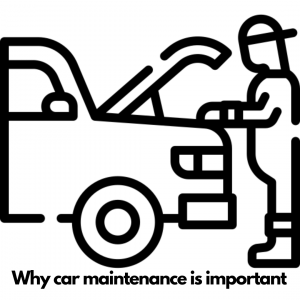
A car is not only a significant investment, but it is also an important asset that needs proper care and maintenance. Regular maintenance of a car can extend its life and ensure that it runs smoothly for years to come. Neglecting car maintenance can lead to a number of problems, ranging from costly repairs to safety hazards.
Importance of understanding basic car maintenance
As a car owner, it is important to have a basic understanding of car maintenance to ensure that your car remains in top condition. Basic car maintenance not only saves you money on repairs, but it also helps you identify potential problems before they become major issues. With a little bit of knowledge and effort, you can keep your car running smoothly and avoid expensive repairs.
In this article, we will discuss some of the best car maintenance tips for beginners. These tips will help you maintain your car and ensure that it runs smoothly for years to come. Whether you are a new car owner or someone who wants to learn more about car maintenance, this article will provide you with valuable information that you can use to take better care of your car.
Recommended – The Beginner’s Guide to OBD: How OBD Works?
II. Regular Maintenance
A. Oil changes
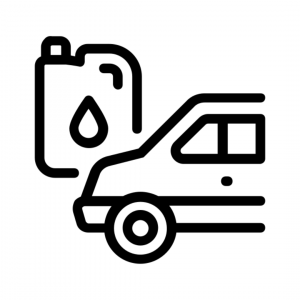
One of the most important aspects of car maintenance is regular oil changes. Oil is the lifeblood of the engine, and it lubricates the moving parts, preventing them from grinding against each other and causing damage. Over time, the oil in the engine gets dirty and loses its effectiveness. This is why regular oil changes are so important.
Importance of oil changes
Regular oil changes can help improve your car’s performance and prolong its lifespan. When the oil is dirty and ineffective, the engine has to work harder to function properly, which can lead to reduced fuel efficiency, reduced performance, and even engine damage. On the other hand, changing the oil on a regular basis can help keep your engine running smoothly, improve your car’s fuel efficiency, and prevent costly repairs down the road.
How often should oil changes be done?
The frequency of oil changes depends on several factors, such as the make and model of the car, the type of oil used, and how often the car is driven. As a general rule of thumb, it’s recommended to change the oil every 5,000 to 10,000 kilometers, or every year, whichever comes first. However, it’s always best to consult your owner’s manual for specific recommendations for your car.
How to check the oil level and when to add oil
Checking your car’s oil level is a simple and important task that should be done regularly. To do this, make sure your car is on level ground and the engine is off. Locate the dipstick, which is usually near the oil filler cap, and remove it. Wipe the dipstick clean with a rag, reinsert it, and then remove it again to check the oil level. The oil level should be between the “minimum” and “maximum” marks on the dipstick. If the oil level is low, add more oil as needed, being careful not to overfill. It’s also important to use the recommended type of oil for your car. This information can be found in your owner’s manual.
Recommended – Top 4 Essential & Best Practices for Using OBD Scanners
B. Checking Fluid Levels

By following these simple steps, you can ensure that your car’s engine is always properly lubricated and running smoothly. Regular oil changes are one of the easiest and most effective ways to keep your car in good condition and prevent costly repairs in the future.
When it comes to car maintenance, checking fluid levels is an essential task that every beginner should know. Your car depends on various fluids to function correctly, and if any of these levels drop too low, it can lead to significant damage and even car breakdown. In this section, we will discuss the importance of checking fluid levels and how to do it effectively.
The different fluid levels that you need to check regularly include engine oil, transmission fluid, brake fluid, coolant, and power steering fluid. Each fluid has a unique purpose, and its levels should be checked and maintained regularly to keep your car running smoothly.
To check your fluid levels, start by reading your owner’s manual to locate the dipstick or reservoir for each fluid. Using a clean rag or towel, remove the dipstick and wipe it clean. Then, reinsert it and remove it again to get an accurate reading of the fluid level. If the level is too low, you will need to add more fluid to maintain the appropriate level.
Maintaining proper fluid levels is crucial because each fluid plays a critical role in your car’s performance. For instance, engine oil is responsible for lubricating your engine’s moving parts, while transmission fluid helps your car shift gears smoothly. Brake fluid, on the other hand, is essential for stopping your car, and coolant helps regulate your car’s temperature. Finally, power steering fluid ensures that you can turn your car’s steering wheel with ease.
Failing to maintain these fluid levels can lead to severe car problems and even accidents. For example, low engine oil levels can cause your engine to overheat, while low brake fluid levels can lead to brake failure. By checking and maintaining your car’s fluid levels regularly, you can prevent these issues and ensure that your car runs smoothly and safely.
In conclusion, checking and maintaining your car’s fluid levels is one of the most critical car maintenance tips for beginners. It is an easy and straightforward task that can save you from costly repairs and keep you safe on the road. Always remember to check your owner’s manual to locate the dipstick or reservoir for each fluid and check them regularly. By doing so, you can ensure that your car runs smoothly and reliably for years to come.
Recommended – Introduction to On-Board Diagnostics (OBD) : A Comprehensive Guide
C. Tire Maintenance
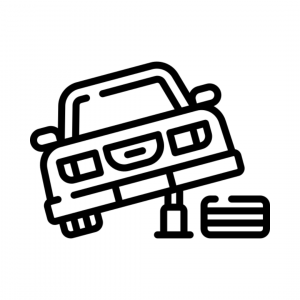
Proper tire maintenance is one of the most essential and easy car care tips that beginners should keep in mind. It not only ensures your safety on the road but also enhances the performance of your vehicle. Tire pressure is a crucial aspect of tire maintenance that should never be ignored. Maintaining proper tire pressure can help improve fuel efficiency and prevent premature tire wear.
To check your tire pressure, you need a tire pressure gauge, which is an inexpensive tool available at most automotive stores. First, remove the valve cap on the tire and attach the tire pressure gauge. The gauge will show the current pressure, and you can compare it with the recommended pressure listed in your vehicle’s owner’s manual or on the tire placard found on the driver’s side door jamb. If the pressure is low, add air until the desired pressure is reached. If it is too high, release air until the correct pressure is achieved.
Regularly checking and maintaining proper tire pressure is important for several reasons. Firstly, underinflated tires can cause increased friction between the tire and the road, leading to excessive heat buildup, which can result in tire failure. Secondly, overinflated tires can cause uneven wear, reducing the life of your tires and reducing traction on the road. Lastly, maintaining proper tire pressure can help improve fuel efficiency, saving you money at the gas pump.
In addition to tire pressure, tire tread depth is another important aspect of tire maintenance that should not be overlooked. Tires with worn treads have reduced traction, making it harder to control your vehicle on wet or slippery roads. To check your tire tread depth, you can use a tread depth gauge or the penny test. Place a penny upside down in the tire tread, and if you can see the top of Lincoln’s head, it’s time to replace your tires.
In conclusion, regular tire maintenance is an easy car care tip that beginners should prioritize to ensure their safety and extend the life of their vehicle. Proper tire pressure and tread depth can help improve fuel efficiency, prevent premature wear, and provide better traction on the road. By taking care of your tires, you can enjoy a smoother and more comfortable ride.
Recommended – A Comprehensive Guide to Choosing the Right OBD Scanner for Your Vehicle
III. Essential Tools
Car maintenance requires certain tools to get the job done right. While some repairs require professional help, there are simple tasks you can do on your own with the right tools. Here are some of the basic tools you need to have in your garage for easy car care tips.
A. Basic tools for car maintenance

List of tools needed
A set of basic tools is essential for maintaining your car. Here are some of the tools you need to have:
- Socket set: A set of sockets in different sizes is needed for removing bolts and nuts of various sizes.
- Wrenches: A set of open-end and box-end wrenches in different sizes is essential for tightening and loosening nuts and bolts.
- Screwdrivers: A set of screwdrivers in different sizes and types (Phillips, flathead) is necessary for removing and installing screws.
- Pliers: A set of pliers including regular pliers, needle-nose pliers, and locking pliers is needed for gripping and turning small parts.
- Jack and jack stands: A hydraulic jack and jack stands are needed for lifting the car to work on the wheels or undercarriage.
- Oil filter wrench: A tool for removing and installing oil filters.
- Funnel: Used for pouring fluids into the car without spilling.
How to use them
Knowing how to use these tools is crucial for easy car care tips. Always follow the manufacturer’s instructions when using tools. Here are some basic steps for using the tools mentioned above:
- Socket set: Attach the appropriate socket to the wrench handle and turn it counterclockwise to loosen the bolt or nut. To tighten, turn the socket clockwise.
- Wrenches: Place the open end or box end of the wrench over the nut or bolt and turn it clockwise or counterclockwise as needed.
- Screwdrivers: Place the tip of the screwdriver into the screw head and turn it to loosen or tighten the screw.
- Pliers: Use the pliers to grip small parts and turn them as needed.
- Jack and jack stands: Use the jack to lift the car, then place the jack stands under the car for support.
- Oil filter wrench: Use the oil filter wrench to remove and install the oil filter.
- Funnel: Place the funnel into the opening of the fluid container and pour the fluid into the car.
Recommended – What Are Cornering Headlights | Everything You Need to Know
Why are they important
Having the right tools is essential for easy car care tips. Without the proper tools, you may not be able to perform the necessary maintenance tasks on your car. Using the wrong tools can also damage your car or make the task more difficult than it needs to be. By having the right tools and knowing how to use them, you can save time and money by performing basic maintenance tasks yourself.
B. Emergency Tools
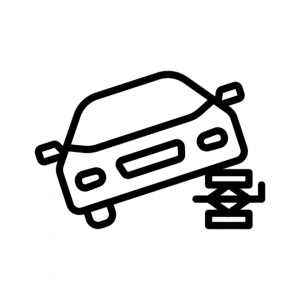
Car emergencies can happen at any time and being prepared with the right tools can make all the difference. Here are some essential emergency tools that every car owner should have:
- Spare tire, jack, and lug wrench: These tools are crucial in case of a flat tire. It’s important to know how to change a tire and to ensure that your spare tire is properly inflated and in good condition.
- Jumper cables: Jumper cables can help jump-start your car if your battery dies. It’s important to know how to use them properly to avoid damaging your car or injuring yourself.
- Flashlight and extra batteries: A flashlight can be a lifesaver if you break down at night. Make sure to keep extra batteries on hand as well.
- Reflective triangles or flares: These tools can alert other drivers to your presence and help prevent accidents if you break down on the side of the road.
- First aid kit: Accidents can happen, and having a first aid kit on hand can help you address minor injuries until help arrives.
It’s important to keep these emergency tools in your car at all times and to make sure they are in good condition. Knowing how to use them properly can also save time and prevent further damage in case of an emergency.
In summary, having these essential emergency tools on hand can be one of the easiest car care tips that can help you in unexpected situations. It’s always better to be prepared for the worst, so make sure you have these tools in your car and know how to use them.
IV. Preventative Maintenance
A. Car Wash

A well-maintained car can serve you well for years to come. Preventative maintenance is essential to keep your car running smoothly and avoid costly repairs down the line. One of the easiest and most basic preventative maintenance tasks is washing your car regularly. In this section, we will discuss how to properly wash your car, how often you should do it, and why it is important.
Recommended – Top 5 Most Common Signs of Bad Suspension
How to properly wash your car
Washing your car is not just about making it look good; it’s also about protecting the exterior from dirt, grime, and other contaminants. To wash your car properly, you’ll need a few supplies, including a bucket, a sponge or wash mitt, car shampoo, and a hose or pressure washer.
Start by rinsing your car with water to remove any loose dirt or debris. Then, fill your bucket with water and add the recommended amount of car shampoo. Use the sponge or wash mitt to wash your car one section at a time, starting from the top and working your way down. Rinse each section thoroughly with water before moving on to the next one.
After you have washed the entire car, rinse it thoroughly with water to remove any soap residue. Finally, dry your car with a clean microfiber towel to avoid water spots.
How often should the car be washed?
How often you should wash your car depends on a few factors, including where you live and how often you drive your car. If you live in an area with a lot of dust, pollen, or pollution, you may need to wash your car more often. Similarly, if you drive your car frequently or take it off-road, it may need to be washed more often.
As a general rule, it is recommended to wash your car every two weeks. However, if you notice that your car is particularly dirty or if it has been exposed to harsh elements like salt or sand, you may need to wash it more often.
Importance of washing the car
Regularly washing your car is important for several reasons. First, it helps to maintain the exterior finish of your car, which can prolong its lifespan and help retain its resale value. Second, it helps to protect your car from rust and corrosion caused by dirt, salt, and other contaminants. Finally, a clean car is simply more pleasant to drive and can improve your mood and overall driving experience
In conclusion, washing your car is an easy car care tip that can help to keep your car looking and running its best. By following these simple steps, you can protect your investment and enjoy your car for years to come.
B. Engine Cleaning
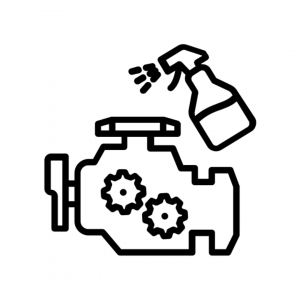
Cleaning the engine of your car is an important part of car maintenance that is often overlooked. Over time, dirt, dust, and debris can accumulate on the engine, which can affect its performance and efficiency. Regular engine cleaning can help improve the overall performance and lifespan of your vehicle.
How to clean the engine
To clean the engine, first, ensure that the engine is cool before starting. Remove any loose debris or leaves that may be present on top of the engine. Cover the electrical components and air intake with plastic bags to prevent any water or cleaning solution from getting inside.
Next, apply a degreaser to the engine bay and allow it to soak in for a few minutes. Use a soft-bristled brush to scrub the engine and remove any dirt and grime. Rinse the engine with a hose, making sure not to spray directly on any electrical components or the air intake.
After rinsing, allow the engine to dry completely. Once dry, remove the plastic bags and start the engine to let it run for a few minutes. This will help evaporate any remaining moisture.
Importance of engine cleaning
Regular engine cleaning can help improve the engine’s performance by reducing the buildup of dirt and grime. It also helps you detect any leaks or damage to hoses or other engine components. A clean engine also makes it easier to spot any potential problems during routine car maintenance.
In summary, cleaning your engine is an easy car care tip that can help extend the life of your vehicle. It is recommended to clean your engine at least once a year or as needed depending on your driving conditions. By following these simple steps, you can help ensure your engine is running smoothly and efficiently.
Recommended – Top 5 Symptoms of a Bad Exhaust System You Should Lookout For
C. Waxing
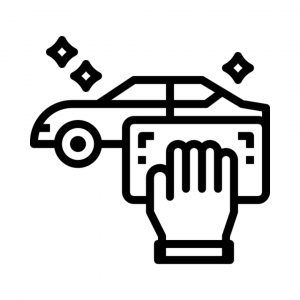
How to properly wax car
Waxing a car is an important step in car maintenance as it helps to protect the paint from fading and damage. To properly wax your car, you will need a microfiber towel, a good quality car wax, and a wax applicator pad. First, wash and dry your car thoroughly to remove any dirt or debris from the surface. Next, apply the car wax using the applicator pad in a circular motion, working in small sections at a time. Be sure to follow the instructions on the wax for the recommended amount to use. Once you have applied the wax to the entire car, let it dry for a few minutes before buffing it off with a clean microfiber towel.
Importance of waxing car
Waxing your car not only helps to protect the paint, but it also gives it a shiny, polished look. The wax acts as a barrier between the paint and the elements, such as sun, rain, and dirt. Over time, the paint on your car can become faded or dull due to exposure to these elements. Waxing your car on a regular basis helps to prevent this and keep your car looking new. Additionally, waxing can help to fill in small scratches and imperfections in the paint, giving it a smoother appearance.
Overall, waxing your car is an easy car care tip that can go a long way in maintaining the appearance and longevity of your vehicle.
D. Rust Prevention
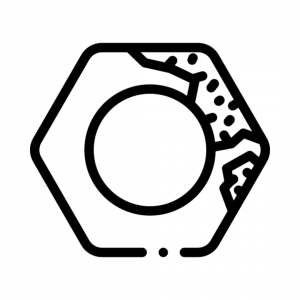
- Wash the car regularly: Regular washing is an easy and effective way to prevent rust. Dirt and grime can trap moisture against the car’s surface, leading to rust formation. Therefore, it’s important to wash the car at least once a month, especially during the winter months when road salt is used.
- Keep the car dry: Moisture is the main cause of rust formation. Therefore, it’s important to keep the car dry as much as possible. Avoid parking the car in damp or humid areas, and use a garage or car cover to protect the car from rain and snow.
- Apply a rust inhibitor: There are many rust inhibitors available in the market that can protect the car’s surface from rust. These inhibitors usually contain chemicals that create a barrier between the car’s surface and moisture, preventing rust formation. Follow the instructions carefully when applying the inhibitor.
- Check for scratches and chips: Scratches and chips on the car’s surface can expose the metal underneath to moisture, leading to rust formation. Therefore, it’s important to check for scratches and chips regularly and fix them as soon as possible.
- Apply a protective coating: Applying a protective coating, such as wax or paint sealant, can provide an extra layer of protection against rust. These coatings create a barrier between the car’s surface and moisture, preventing rust formation.
In conclusion, rust prevention is an important aspect of car maintenance. Regular washing, keeping the car dry, applying a rust inhibitor, checking for scratches and chips, and applying a protective coating are some effective ways to prevent rust formation. By following these tips, you can keep your car looking new and prevent costly repairs.
Recommended – 5 Symptoms Of a Bad ABS System You Should Look Out For
V. Common Car Issues and How to Fix Them
A. Dead Battery
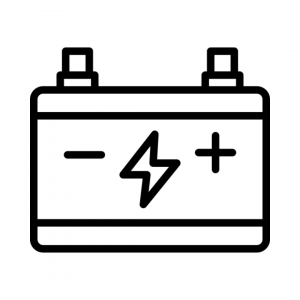
A dead battery is one of the most common car issues that drivers may encounter. It can happen unexpectedly, leaving you stranded and unable to start your car. Fortunately, there are two main ways to fix this problem: jumpstarting the car or replacing the battery altogether.
- How to jumpstart a car: Jumpstarting a car is a relatively simple process that can be done in just a few steps. You’ll need jumper cables and another car with a working battery. Follow these steps to jumpstart your car:
- Park the two cars close together but not touching.
- Turn off both cars and ensure that both parking brakes are engaged.
- Connect the red jumper cable to the positive (+) terminal on the dead battery.
- Connect the other end of the red jumper cable to the positive (+) terminal on the good battery.
- Connect the black jumper cable to the negative (-) terminal on the good battery.
- Connect the other end of the black jumper cable to an unpainted metal surface on the engine block of the dead car.
- Start the engine of the good car and let it run for a few minutes.
- Try to start the dead car. If it doesn’t start, wait a few more minutes and try again.
Once the dead car starts, leave the engine running for at least 30 minutes to recharge the battery.
- How to replace a car battery: If jumpstarting your car doesn’t work or you have to jumpstart it frequently, it may be time to replace the battery. Here are the steps to replace your car battery:
- Purchase a new battery that matches the specifications of your car’s make and model.
- Turn off the engine and make sure the car is in the park (or in gear if it’s manual).
- Open the hood of the car and locate the battery.
- Remove the negative cable from the battery terminal first (usually marked with a minus (-) sign).
- Remove the positive cable from the battery terminal next (usually marked with a plus (+) sign).
- Remove any screws, bolts, or brackets that are holding the battery in place.
- Carefully lift the battery out of the car and dispose of it properly.
- Place the new battery in the same position as the old one and secure it in place.
- Reattach the positive cable to the positive battery terminal.
- Reattach the negative cable to the negative battery terminal.
- Test the new battery by starting the engine.
By following these simple steps, you can jumpstart your car or replace a dead battery and get back on the road in no time. Remember to always take safety precautions when working with car batteries and seek professional help if you are unsure or uncomfortable with the process.
Recommended – Top 11 Essential Tools to Keep in Your Car
B. Flat Tyre
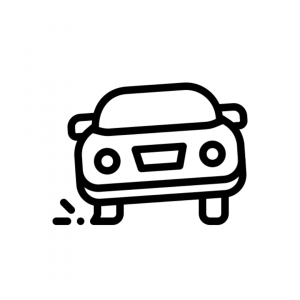
A flat tyre is one of the most common problems drivers face. It can be caused by a puncture, a slow leak, or even hitting a pothole. Whatever the cause, it’s important to know how to change a tire.
How to change a tyre
To change a tire, you will need a few basic tools:
- Spare tire
- Lug wrench
- Jack
- Wheel chocks (or bricks, or large rocks)
Here’s how to change a tire:
- Find a safe location to change your tire. Pull over to the side of the road, or a parking lot, away from traffic.
- Apply the parking brake, turn off the engine, and put the car in gear (or park if you have an automatic transmission).
- Use the lug wrench to loosen the lug nuts on the flat tire. Do not remove them yet.
- Place the jack under the car, in the proper location, according to your car’s owner’s manual.
- Raise the jack until the flat tire is about six inches off the ground.
- Remove the lug nuts and the flat tire.
- Put the spare tire on the car, lining up the holes with the studs.
- Replace the lug nuts and tighten them by hand.
- Lower the car back down to the ground with the jack.
- Tighten the lug nuts with the lug wrench, using a star pattern (tighten one lug nut, then tighten the one across from it, and so on).
- Check the tire pressure on the spare tire and adjust if necessary.
Importance of knowing how to change a tire
Knowing how to change a tire is an essential skill for any driver. A flat tire can happen at any time, and if you don’t know how to change it, you could be stuck waiting for help. Additionally, being able to change a tire can save you money, as you won’t have to pay for a tow truck or roadside assistance. So take the time to learn how to change a tire, and keep the necessary tools in your car.
C. Overheating
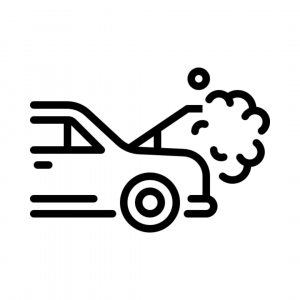
Overheating is a common car issue that can occur for several reasons. It happens when the temperature in the engine rises above the normal operating range, which can cause severe damage to the engine and other components.
Causes of Overheating
The most common reasons for overheating are a malfunctioning cooling system or low coolant levels. Other causes include a broken thermostat, a damaged radiator, a faulty water pump, a damaged head gasket, and a blocked coolant hose. It is essential to identify the cause of overheating before attempting to fix it, as different issues require different solutions.
How to Prevent Overheating
Regular maintenance can help prevent overheating. Checking the coolant level regularly and replacing the coolant according to the manufacturer’s recommendation can help prevent overheating. Additionally, it is essential to inspect the cooling system and its components, including the radiator, water pump, and hoses, for any damage or leaks.
What to do if Car is Overheating
If the car starts to overheat, there are a few things you can do to prevent further damage. The first thing to do is to pull over to a safe place and turn off the engine. It is not recommended to continue driving the car when it’s overheating, as it can cause severe damage to the engine. If the car is not severely overheating, you can check the coolant level and add more if necessary. It is also recommended to let the engine cool down before adding more coolant. If the car continues to overheat, it’s best to call for professional help to diagnose and fix the problem.
In conclusion, overheating is a common car issue that can cause severe damage to the engine and other components. Regular maintenance, including checking the coolant level and inspecting the cooling system, can help prevent overheating. If the car starts to overheat, it’s essential to pull over to a safe place, turn off the engine, and let it cool down before attempting to add more coolant or driving the car. If the issue persists, it’s best to call for professional help.
Recommended – Up-Side Down VS Telescopic Front Suspension | Everything You Need to Know
Conclusion
Regular maintenance is crucial to the longevity of your car, and checking fluid levels is a simple yet essential aspect of that maintenance. By regularly checking and maintaining fluid levels such as oil, coolant, and transmission fluid, you can prevent costly repairs and breakdowns down the line.
Another easy car care tip is to regularly check your tire pressure. Proper tire pressure not only ensures a smoother ride but also improves fuel efficiency and reduces wear and tear on your tires. By having the right tools such as a tire pressure gauge, you can easily check and fill your tire pressure yourself.
In addition to regular maintenance, it’s essential to have the right tools on hand for emergencies. Essential emergency tools such as a spare tire, jack, and jumper cables can mean the difference between a minor inconvenience and a major problem.
Preventative maintenance such as regular car washes, engine cleaning, waxing, and rust prevention can also help keep your car looking and running its best. By learning how to perform these tasks yourself, you can save money and ensure your car remains in top condition.
It’s also important to know how to fix common car issues such as a dead battery, flat tire, and overheating. By understanding how to jumpstart a car, change a tire, and prevent overheating, you can avoid being stranded and potentially costly repairs.
In conclusion, these car maintenance tips for beginners can help you save time, money, and stress in the long run. By regularly maintaining your car, having essential tools on hand, and knowing how to fix common issues, you can ensure that your car runs smoothly and lasts for years to come. Remember to always prioritize safety and continue learning about car maintenance to improve your skills and knowledge.


